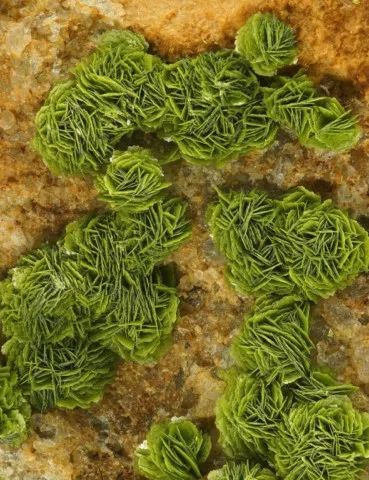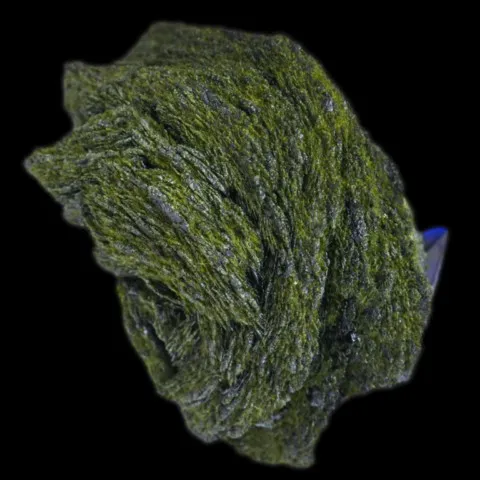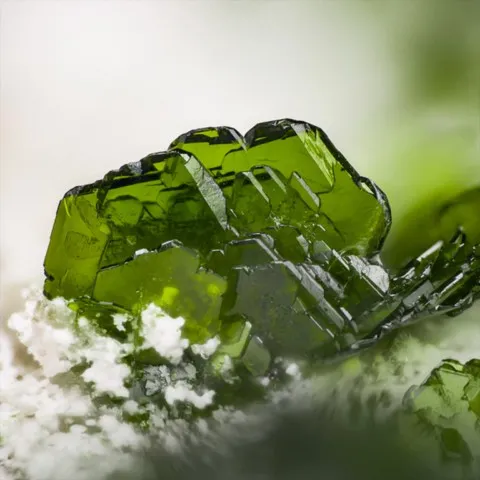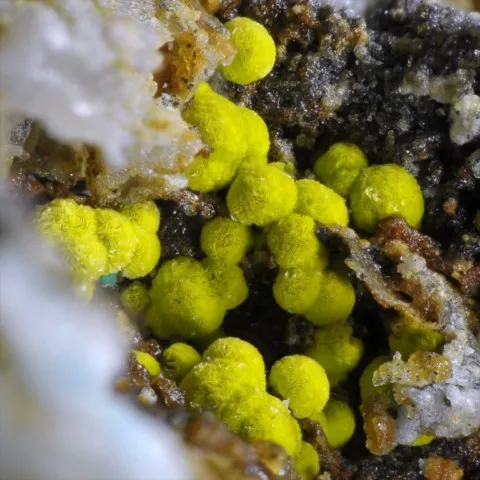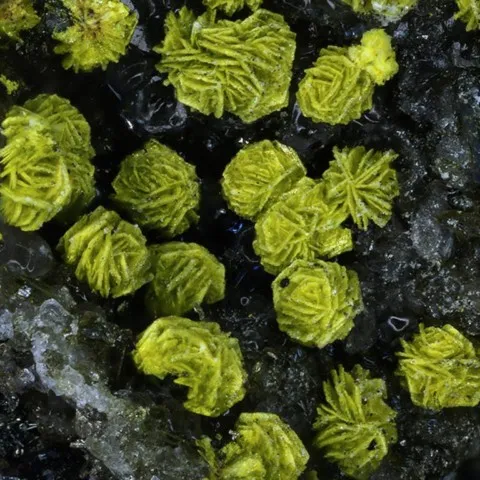VOLBORTHITE
Class : Phosphates, arsenates, vanadates
Subclass : Hydrated vanadates
Crystal system : Monoclinic
Chemistry : Cu3V2O7(OH)2 2H2O
Rarity : Uncommon
Volborthite is a copper vanadate formed in the oxidation zone of hydrothermal vanadium deposits. It is a secondary mineral known as impregnations in sandstones and conglomerates. It was named in honor of the Russian paleontologist Alexander Fedorovich von Volborth who discovered the mineral in the Urals. Volborthite occurs as rosettes of hexagonal or triangular scaly crystals generally not exceeding 5 mm, as scaly encrustations, as spherulitic, fibroradiated or reticulated aggregates. Its color is dark olive green to yellow-green, brownish yellow or brown.
Main photo : Volborthite from Monument Valley, Arizona, USA © Stephan Wolfsried
Volborthite in the World
Twinning
No twinning known for this mineral species.
Fakes and treatments
No fakes listed for this mineral species.
Hardness : 3.5
Density : 3.5 to 3.8
Fracture : Undetermined
Streak : Undetermined
TP : Translucent
RI : 1.793 to 1.816
Birefringence : 0.023
Optical character : Biaxial (+/-)
Pleochroism : Low
Fluorescence : None
Solubility : Acids
Magnetism : NoneRadioactivity : None

